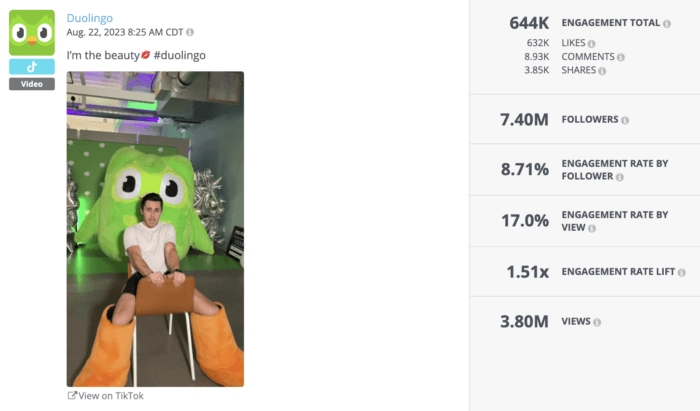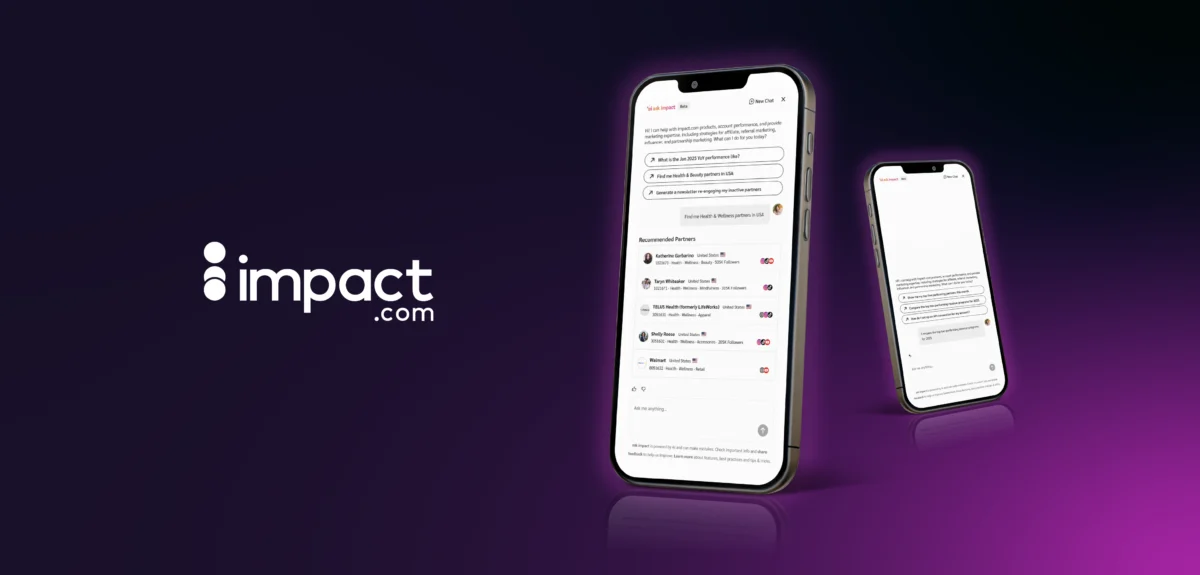As of 2025, 5.124 billion people are on social media, bouncing between 6.7 different platforms on any given day.
Every second, posts, stories, reels, and updates flood feeds, with brands, influencers, and everyday users sharing content at a steady pace. Staying visible takes more than frequent posting—it requires content that feels relevant and encourages participation.
This guide breaks down techniques for creating content that engages, drives interaction, and builds long-term loyalty across social media platforms.
Why social media engagement is a must for businesses
Engagement reflects brand trust, visibility, and community strength. It shapes how people connect with your business and drives long-term growth. Here’s more on why it matters:
1. Engagement proves audience alignment
When people comment, share, or reply, they show that your content connects with them. Engagement reflects alignment between your brand and its audience.
Gen Z and millennials, in particular, prioritize authenticity and shared values when engaging with brands. LEGO, for example, has built a massively engaged community by encouraging fans to share creations, pitch product ideas, and join brand-led discussions. This two-way interaction transforms customers into brand advocates.
2. It turns social media into a conversation, not a broadcast
Nobody likes a one-sided conversation. Brands that respond to comments, acknowledge feedback, and engage in real-time discussions build stronger connections.
Think of social media engagement as ongoing market research. Every comment, share, and reaction is a clue about what your audience values.
3. It builds trust and loyalty through community
A social media following isn’t the same as a community. The difference? A community makes people feel heard, valued, and connected.
Glossier does this well. It treats customers as insiders, encouraging them to share feedback and beauty routines. Through Instagram polls and its community Slack, Glossier sparks real conversations, making customers feel like co-creators, not just consumers.
4. It fuels visibility and organic reach
Social media algorithms reward engagement. Posts that spark audience interaction are prioritized in feeds, amplifying brand exposure without relying solely on paid ads.
A 2024 Stasita survey found that 83 percent of marketers cite increased exposure as a key benefit of social media marketing, proving that engagement directly influences visibility. A growing reach means lower reliance on paid promotion and more opportunities for organic brand discovery.
5. Creates a competitive advantage in a crowded market
With millions of brands competing for attention, engagement sets businesses apart. A thriving community creates brand stickiness, making audiences less likely to switch to competitors.

Source: Wendy’s
Wendy’s, for example, has built a loyal following by making social media a conversation, not a sales pitch. Its quick-witted replies and playful interactions keep audiences engaged, strengthening brand affinity beyond the product itself.
6. Provides valuable insights for marketing and product teams
Every comment, share, and reaction offers insight into what connects with audiences, helping brands refine content strategies and inform product decisions.
Beyond social metrics, engagement provides direct insight into customer behavior, pain points, and brand experiences. Social marketers can fine-tune messaging, adapt strategies, and relay valuable feedback to marketing, product, and sales teams. When brands actively listen and adjust, engagement becomes a tool for growth, not just a number.
Common social media engagement challenges (and how to fix them)
Building engagement requires strategy and adaptability. Here’s why brands struggle and how to break through.
Challenge #1: Breaking through the noise
Capturing attention isn’t easy. On Facebook, engagement hovers at 0.07 percent, with images slightly higher at 0.12 percent. Instagram photos perform better at 2.69 percent, but interaction isn’t guaranteed.
The takeaway? Posting more won’t cut it—posting better will. Content needs to be:
- Personal (relatable and human, not overly polished)
- Interactive (questions, polls, and UGC spark participation)
- Story-driven (narratives build emotional connections)
Challenge #2: Internal pushback on engagement-first strategies
Many brands, especially in corporate or luxury sectors, resist engagement-focused content. Leadership may prioritize polished branding over conversation-driven content.
The fix? Show that engagement is more than a social media goal—it’s a business growth strategy. Start with small tests (polls, Q&As, informal posts) and prove how engagement boosts conversions and brand loyalty.
Challenge #3: Lack of historical data
Newer brands often hesitate, uncertain about what will connect with their audience. Many rely on safe, generic content without past data that lacks impact.
Solution: Test, track, refine. Start with small, interactive content experiments. Engagement insights come from doing, not guessing.
How to drive engagement with a smart content strategy
Engagement isn’t random. A clear plan, intentional goals, and ongoing adjustments keep content relevant and interactive. Here’s how to create posts that encourage participation and strengthen community ties.
1. Set engagement goals that match your brand’s needs
Not every interaction carries the same weight. Before crafting content, determine:
- Are you measuring audience interaction? (Comments, replies, shares)
- Are you tracking reach? (Impressions, profile visits, mentions)
- Are you driving action? (Link clicks, saves, direct messages)
Once you set clear KPIs, align them with broader business objectives. A retail brand might measure how engagement drives sales, while a B2B company could track lead generation through content and audience interactions.
2. Lean into data and social listening
Past performance provides valuable insight into engagement trends. Analyze historical data alongside your engagement KPIs to identify the content that generates the most audience interaction.
Look for patterns in formats, topics, and messaging that consistently lead to shares, saves, or comments. Tools like Sprout Social, Hootsuite, and Brandwatch can help track engagement trends, audience sentiment, and competitor activity.
Examining engagement beyond your own content reveals opportunities to refine your strategy and create content that resonates more effectively.
3. Maintain consistency with an engagement-driven content plan
Posting randomly won’t build engagement. A structured plan will. Treat engagement as a content pillar, not an afterthought.
Your strategy should include:
- A mix of interactive posts (polls, questions, challenges)
- Clear calls to action (CTAs) (encouraging shares, comments, and participation)
- A posting schedule that prioritizes quality over frequency
4. Experiment with the 80/20 rule
Consistency builds stability, but growth comes from experimentation. The 80/20 rule keeps brands adaptable: 80 percent of content follows proven strategies, while 20 percent explores new formats, messaging, and engagement tactics to keep audiences engaged.
Use that 20 percent to test beyond interactive features like polls, Q&As, and videos Try new formats, tones, and creative approaches to see what captures attention.
For example, if your brand typically posts formal case studies, experiment with humor, meme-driven content, or storytelling to make the message more relatable. A B2B company that usually shares industry reports could test more conversational insights, while a retail brand might transform static product posts into behind-the-scenes videos or customer-led stories.
A good place to start is to look at content that already performs well in your 80 percent and modify it in unexpected ways. Small shifts—whether in visuals, copy, or format—can break audience habits and encourage deeper interaction while keeping your brand recognizable.
Small-scale tests provide proof for teams facing internal resistance. Once experiments show impact, it’s easier to get leadership buy-in and align engagement strategies with business goals like revenue and lead generation.
5. Prioritize community engagement
Engagement is a two-way street. Brands that actively respond to comments, messages, and mentions create stronger connections and build trust. A community engagement policy helps ensure consistency, making interactions feel natural and responsive, rather than sporadic or forced.
Duolingo thrives on playful engagement, especially on TikTok. The brand responds to comments, jumps on trends, and uses humor to keep users involved.

Source: Duolingo
Like Duolingo, you can respond with personality, acknowledge your audience, and involve them in the conversation. Run polls, ask followers what content they want more of, and create posts that invite participation. This not only humanizes your brand but also reinforces that your audience’s voice matters.
6. Connect social engagement with broader marketing efforts
Social media data is valuable, but it’s only part of the picture. Look beyond platform metrics and collaborate with other marketing teams to see what’s working across different channels. If a blog post, webinar, or email campaign is performing well, find ways to adapt it for social media.
You can also identify gaps in what the audience feels or takes away from other marketing efforts, and use organic social to plug that hole. For example, when collaborating on a webinar, paid social content might focus on providing support through the resource itself, while organic social content can make the audience feel seen by addressing the pain points that led them to seek that support. This approach strengthens engagement by making marketing efforts more holistic and audience-driven.
Relay social insights back to content teams to help shape future marketing efforts. If certain topics spark engagement on social, they might also perform well as long-form content, podcasts, or video series.
FAQs
It depends on your audience and platform. Start with 3-5 posts per week, and adjust based on engagement data. Consistency matters more than frequency.
Content that educates, entertains, or sparks emotion tends to perform best. Think behind-the-scenes videos, user-generated content, and interactive polls. A good rule of thumb is to ask: What value are we providing to our audience with this post? You build deeper engagement and a loyal following by centering your content around community needs and interests.
Track metrics like comments, shares, and saves, as well as broader KPIs like reach and follower growth. Use platform analytics to refine your strategy.
Revisit your audience research and experiment with new formats. Engage actively with your followers and consider collaborating with influencers to boost visibility.
Keeping the Conversation Going
Social media is constantly shifting, but one thing stays the same—engagement makes the difference between brands people scroll past and brands they connect with. Creating content that sparks participation isn’t about chasing algorithms. It’s about listening, adapting, and making space for audience interaction.
Every comment, share, and reaction is an opportunity to build trust and strengthen community ties. Whether through quick-witted brand responses, user-driven content, or well-placed interactive posts, engagement shapes long-term relationships.
The brands that prioritize participation over passive content will always have a place in the conversation.




